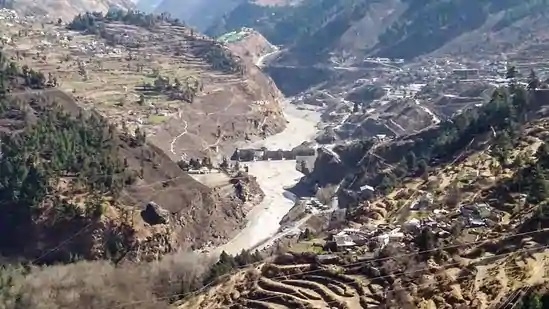GLACIER BURST
| Date :09-Feb-2021 |

THE Himalayan tragedy that unfolded in Chamoli district of Uttarakhand after a portion of the Nanda Devi glacier came-off to trigger an avalanche has brought back the horrific memories of the 2013 deluge in the State. Over 5,000 people had been killed in that disaster while more than three lakh were trapped in the valleys leading to the Char Dham pilgrimage sites. Bodies from that tragedy are still being recovered near Kedarnath. Now, the Chamoli tragedy is another warning signal to humans that nature will keep finding ways to seek its own space. Against the backdrop of the 2013 disaster, the destruction in the high mountain areas and to the two power projects on Sunday did not spill over to the lower regions despite sudden flooding in Dhauli Ganga, Rishi Ganga and Alaknanda tributaries of the Ganga. Though over 125 people are being feared killed due to the glacier burst, quick pressing of disaster management services and prompt rescue work has largely managed to keep the situation under control.
Many villages were evacuated and taken to safer areas as waters rushed down the mountainsides in a raging torrent. Of course, it is just a minor solace from the tragedy but going by the record of natural disasters hitting Uttarakhand, this time the authorities seemed to have learnt their lesson. It is hoped that the Chamoli tragedy changes the lethargic approach of the planners towards the growing threat of glacier melting in the upper Himalayas. Analysts and ecological scientists had been red-flagging the threat while seeking a better infrastructure for glacial studies to avert major tragedies. The threat is absolutely real and clearly manifested in the Nanda Devi glacier burst. It is one problem that needs immediate attention to maintain the delicate ecological balance as the Himalayas are considered very fragile for further exploitation to build infrastructure.
There is no alternative than to allot nature its own space while keeping human lives out of the harm’s way. The Nanda Devi glacier break-off has also provided the government and scientific community to turn their attention to the study published in the journal Science Advances in June 2019 which has indicated that melting of Himalayan glaciers has doubled since the start of the 21st century. It poses grave danger not only to people in India but also in China, Nepal and Bhutan. A synthesised data shows that glaciers have been losing more than a vertical foot and half of ice each year since 2000. It is double the amount of melting that took place from 1975 to 2000. The study is the most authentic data on how fast Himalayan glaciers are melting. Global warming is being seen as the prime reason for the rising pace of glacier melting. Temperatures do vary from place to place but from 2000 to 2016 they have averaged one degree Celsius higher than those till the year 2000. Climate change in the Himalayan glaciers can have a cascading effect if quick steps to mitigate the danger are not devised and implemented.
The last part is the most tricky as it requires a sturdy political will. Over the years, natural disasters of varying degrees have raked up the issue of paying due respect to environment and related studies. However, on most of the occasions human greed to exploit the last ounce of profit from nature has put paid to hopes of striking a healthy ecological balance. Ready reckoner of this point is available in the Western Ghats. It is an example of how man’s desires force him to play with nature and then pay a heavy price. The Western Ghat Ecology Expert Panel headed by Mr. Madhav Gadgil had proposed strict restrictions in activities in ecologically fragile regions in the Ghats. It included total ban on mining, construction, quarrying in sensitive regions. However, it was opposed by the people residing in hilly regions and political leaders despite the warning of a calamitous future. Another committee headed by Mr. K Kasturirangan subsequently diluted the recommendations of the Gadgil Committee. Humanity is still paying for the sin. The Himalayas cannot afford it.